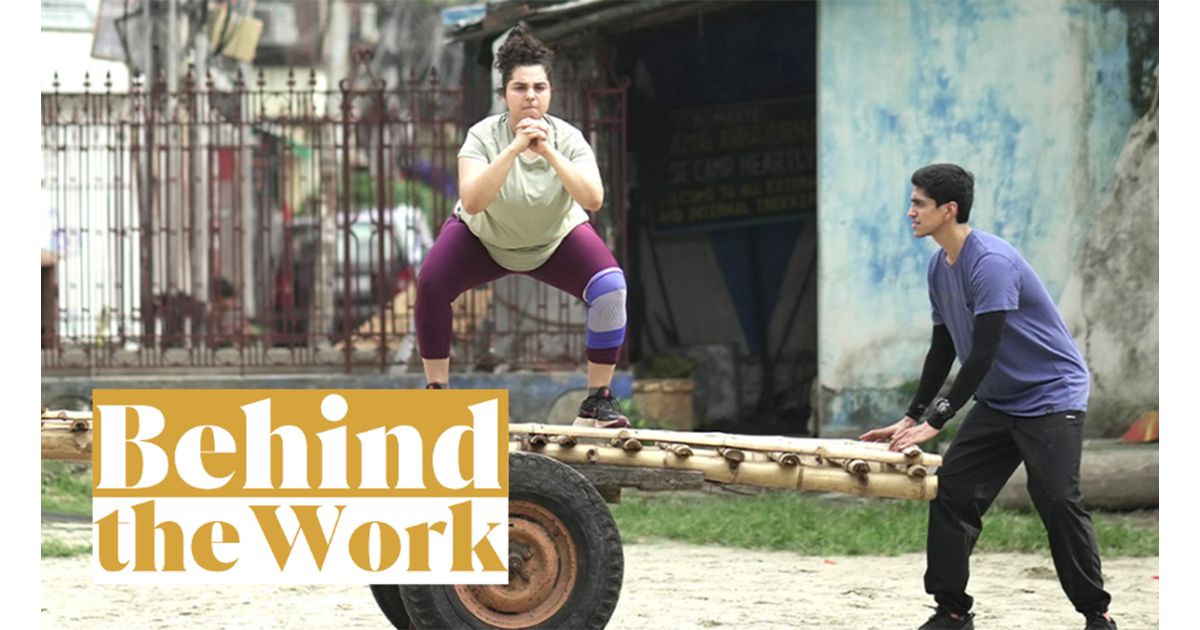- Reportage
Originally published on Little Black Book
CEO of MA&TH and Producer Amit Chandrra explores the making and meaning of ‘Sumo Didi’

Last month, Hakuhodo Inc. proudly announced that a film produced by their Indian production company, MA&TH Entertainment Network, was accepted into Tokyo International Film Festival 2023 as an official competitive selection.
The work, called Sumo Didi, is based on the true story of India’s trailblazing first female sumo wrestler, Hetal Dave, who shattered gender stereotypes in a male-dominated sport.
Speaking exclusively to LBB’s Tom Loudon, MA&TH CEO Amit Chandrra, who produced Sumo Didi, delved into the inspiration behind telling Hetal Dave’s empowering story. He discussed the challenges faced, the creative decisions made, and the film’s impact.
LBB> What inspired you to tell the story of Hetal Dave, India’s first female sumo wrestler? How did you come across her story, and what drew you to it?
Amit> The fact that Hetal Dave’s story is a lot more than her incredible achievements and being India’s first and only female Sumo wrestler is what stood out for us as makers. Her personal journey of fighting societal biases and gender inequality and continuously persevering to break the glass ceiling against all odds and obstacles that life put in her path and coming out stronger and victorious drew us to this story.
LBB> “Sumo Didi” delves into the challenges faced by women in society. Can you tell us about your creative decisions to effectively convey these challenges and the journey of self-discovery in the film?
Amit> One of the significant challenges Sumo Didi delves into is the issue of body shaming, which so many women and men face daily. We have stayed true to Hetal’s life instances and tried our best to convey the message in a film without preaching. We feel that body shaming is so deeply ingrained in our systems that it’s essential to leave the audiences with food for thought when they leave a film, question these age-old issues and acknowledge people for who they are and not how they look or what gender they identify as.
LBB> The Tokyo International Film Festival is a prestigious platform. What does it mean to you, as the creators, to have your film featured as an official competitive selection? How do you think this exposure will impact the film and its message?
Amit> It is encouraging that the Tokyo International Film Festival deemed this a significant theme to be reflected on and acknowledge how cinema celebrates and portrays India and its people. Having a global platform like this has a very positive impact in helping the film reach beyond our borders. Cinema is universal, and when doors like these open for makers like us, it motivates us to work harder and make more global stories of Indian origin.
LBB> Could you share some insights into the creative process behind the film? What were the most challenging and rewarding aspects of bringing Hetal Dave’s story to the screen?
Amit> Contrary to public opinion, as glamorous as filmmaking appears, it’s a highly challenging process, creatively and logistically, no matter which story one sets out to tell. Sumo Didi, too, had the same journey. But for a film based on a natural person, the biggest challenge is to stay true to their story and soul, not give into the tropes of making it into something it’s not. The most rewarding aspect of this process was the day Hetal and her husband, Sujeet, saw the film and thanked us with tears of joy in their eyes. That’s when we were assured that we had done justice to this story and her journey.
LBB> Hetal Dave’s story is about breaking gender stereotypes in a male-dominated sport. How did you approach the visual and narrative elements of the film to showcase this powerful theme?
Amit> The visual and narrative elements of the film are in sync with its writing and performances. We intended to keep the visual storytelling aesthetic accurate to the world we created. For the exact authenticity and for the audience to experience Hetal’s world, we shot in Japan as well. If you notice, nothing is exaggerated or put in for dramatic effect. Unfortunately, even today, we live in a male-dominated world, especially in sports, and it was essential for us to replicate that sense of disparity in our narrative.
LBB> Creative storytelling often involves making unique stylistic choices. Can you highlight any distinctive creative elements or techniques used in “Sumo Didi” that set it apart from other films in this genre?
Amit> A distinctive creative approach we took was in the casting department for this film. We wanted to make the unique choice of casting an actor who was right for the part, not just because they are a star or someone with many followers on social media. This film required a certain physicality to stay true to Hetal. For that, we were lucky to find Shriyam Bhagnani, who worked hard to fit into Hetal’s shoes and delivered a performance which is being appreciated on a global platform now.
LBB> Can you discuss the creative contributions of the film’s music composer and cinematographer to the project?
Amit> The Music and the Cinematography of Sumo Didi complement the storytelling. Akash Agarwal, the Director of Photography, brought to light the film’s director’s vision, keeping the tone subtle yet very effective and cinematic. The songs composed by Amar Mangrulkar and Diptarka Bose beautifully depict the different emotions that the film takes you through.
In a sports film, the background music plays a crucial part in absorbing the audience into a match, a moment, a victory, or a loss, and Amar Mangrulkar has effortlessly achieved that.
All the departments came together to make this one cohesive experience.
LBB> Are there specific scenes or moments in “Sumo Didi” that you are particularly proud of from a creative perspective? Could you share some insights into how these scenes were developed and executed?
Amit> The sequences involving the Sumo wrestling training and the matches were particularly tricky. Sumo as a sport is not very accessible in India. Hence, with Hetal’s input and specialists from Japan, the team designed the training and wrestling match scenes for the film. It was essential to our story to shoot in Japan with real Sumo fighters, and executing all of that most engagingly was a particular highlight of this process.
LBB> With the global reach of film festivals, what impact do you hope “Sumo Didi” will have on discussions about women in sports and gender equality beyond India?
Amit> Honestly, our film is a drop in the ocean of this gigantic discussion of gender disparity in sports in India. But this is also a very sincere step and an attempt to contribute our bit to this conversation. With the global reach of Sumo Didi, the world and the Indian audiences will also sit up and take notice of how important it is to work towards gender equality in not only sports but every aspect of society. Women have incredible strength and talent, and we as a global society need to acknowledge that and empower them more and more.
End article
Read article at:
https://www.lbbonline.com/news/amit-chandrra-on-sumo-didi-how-hakuhodo-and-math-brought-a-journey-of-gender-equality-to-life
















